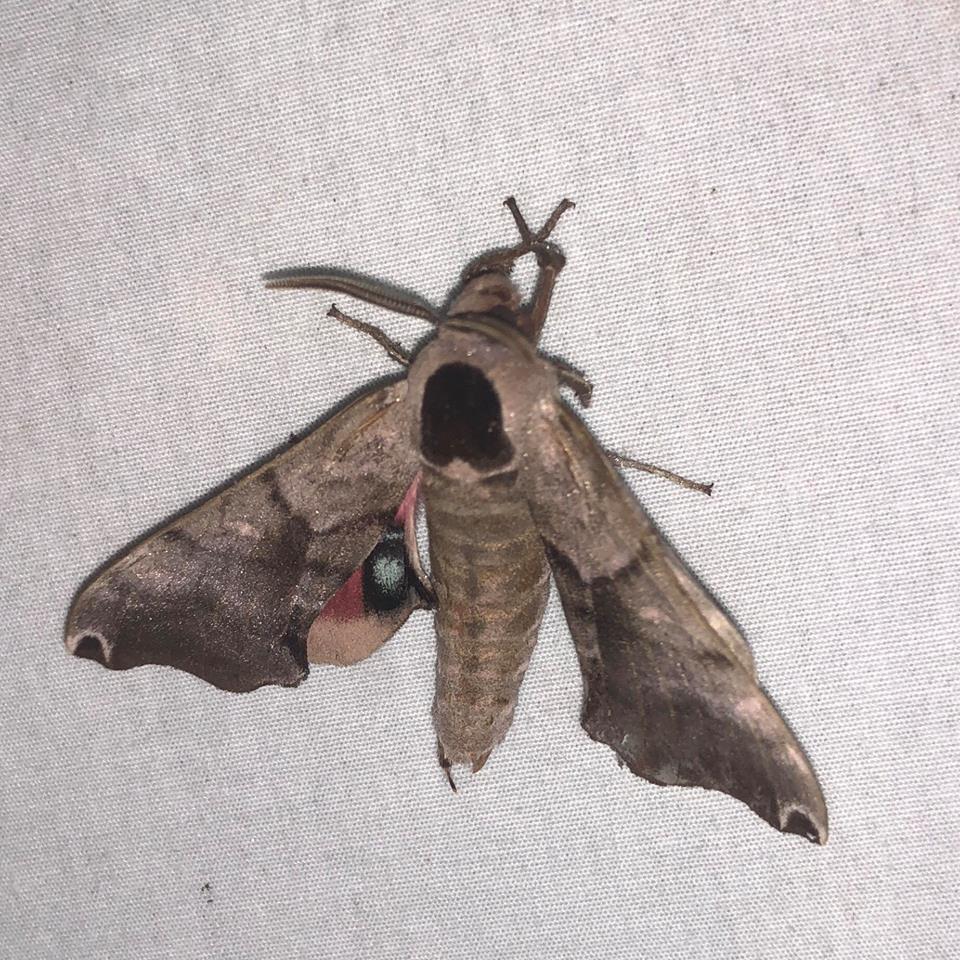ECOLOGY ▪ EDUCATION ▪ ADVOCACY
Smerinthus: (S)merinthos is a Greek word meaning a “cord” or “string”.
Jamaicensis: A reference to Jamaica, the location the moth was likely originally described.
Smeer-in-thuhs jah-may-KEN-sihs
This map shows the confirmed sightings of the Twin-spotted Sphinx moth in Indiana. All sightings were confirmed through photographic documentation by individuals who contributed to the Great American IN Nature Lepidoptera Project (GAIN LP).
 |
GAIN LP documented in county. |
| Date | County | Observer | Notes | Image1 | Image2 |
|---|---|---|---|---|---|
| 2018-05-26 | Owen | Malad, Rick | Adult |
 |

|
| Observation Details | Images |
|---|---|
| Date: 2018-05-26 County: Owen Observer: Malad, Rick Notes: Adult |

 |
Twin-spotted Sphinx caterpillars host on a variety of trees. Adults do not feed.
| Known Larval Food Sources in Indiana | ||
| Family | Taxonomic Name | Common Name |
|---|---|---|
| Order: Fagales | ||
| Betulaceae | Betula spp. | birches |
| Carpinus caroliniana | musclewood, aka blue beech | |
| Ostrya virginiana | hop-hornbeam, aka ironwood | |
| Fagaceae | Quercus spp. | oaks |
| Order: Lamiales | ||
| Oleaceae | Fraxinus spp. | ashes |
| Order: Malvales | ||
| Tiliaceae | Tilia americana | American basswood |
| Order: Rosales | ||
| Rosaceae | Malus spp. | apples and crabapples |
| Prunus spp. | cherries | |
| Spirea spp. | meadowsweets | |
| Ulmaceae | Ulmus spp. | elms |
| Order: Salicales | ||
| Salicaceae | Populus spp. | poplars |
| Salix spp. | willows | |